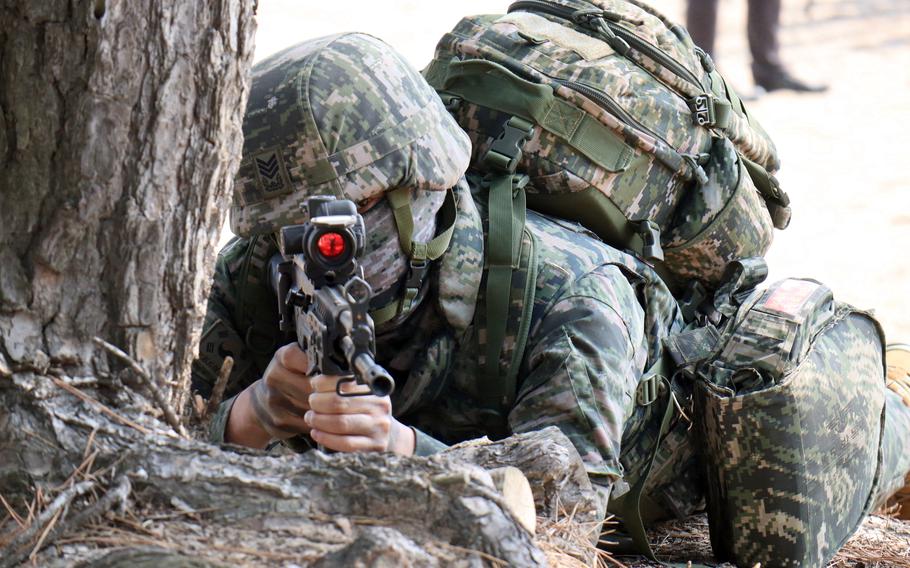
A South Korean marine takes aim during the Ssangyong exercise in Pohang, South Korea, March 29, 2023. (David Choi/Stars and Stripes)
CAMP HUMPHREYS, South Korea — The South Korean military wants more U.S. Marines to participate in annual large-scale amphibious training on and around the Korean Peninsula.
Plans to expand Ssangyong — Korean for “double dragons” — were submitted in a report to lawmakers during a National Defense Committee hearing on Tuesday, a South Korean marine headquarters spokesman told Stars and Stripes by phone the next day.
The hearing took place at the naval headquarters in South Chungcheong Province.
Though the South Korean marines seek to increase the number of U.S. Marines who train during Ssangyong 2024, its own troop levels will remain the same, the spokesman said.
He declined to provide the specific number of troops used by either country in this year’s exercise, which took place in March, citing security concerns.
It’s customary in South Korea for some government officials to speak to reporters on condition of anonymity.
Discussions with the Marine Corps are ongoing and a final decision has not been made, the spokesman added.
U.S. Marine Forces Korea did not immediately respond to a request for comment by phone Wednesday.
This year’s Ssangyong was the largest joint maritime drill in South Korea since 2018 and included the aircraft carrier USS Nimitz, along with its strike group, air wing and about 7,000 sailors and Marines.
Around 30 British marines, taking part in the exercise for the first time, conducted reconnaissance operations.
The Marine Corps describe Ssangyong as routine training designed to boost cooperation with their South Korean counterparts.
“This exercise was an opportunity for our team to conduct training with our [South Korean] allies, develop relationships and improve our ability to work together,” 13th Marine Expeditionary Unit commander Col. Samuel Meyer said in a news release April 5.
Military cooperation between the two allies have taken unprecedented steps this year after President Joe Biden and South Korean President Yoon Suk Yeol agreed to deploy strategic assets to the peninsula in response to North Korea’s ballistic missile testing.
The USS Kentucky sailed to Busan in July, becoming the first nuclear-capable U.S. submarine to visit South Korea in 42 years. Last week, a nuclear-capable B-52H Stratofortress bomber landed on the peninsula for the first time in at least 30 years.
Stars and Stripes reporter Yoo Kyong Chang contributed to this report.